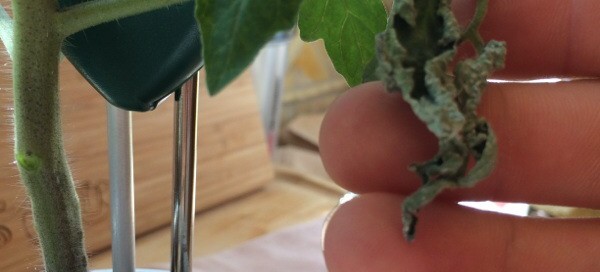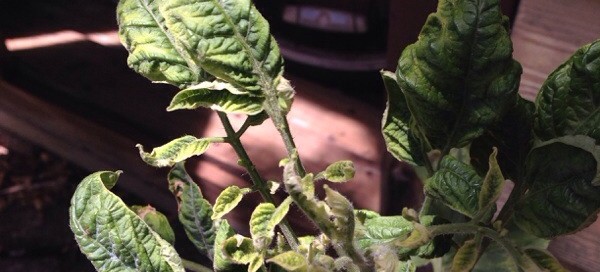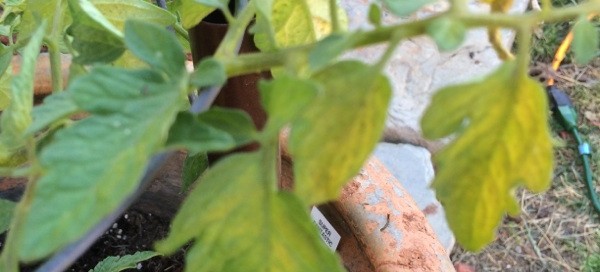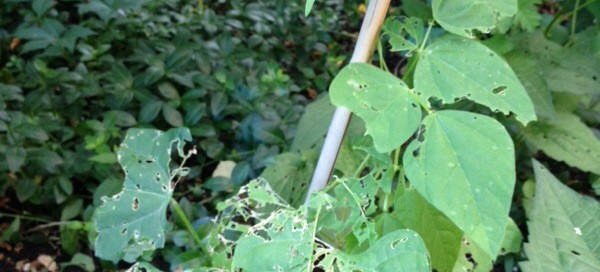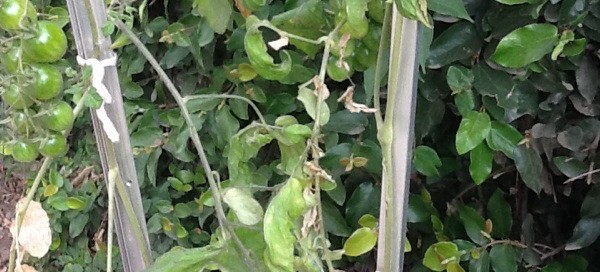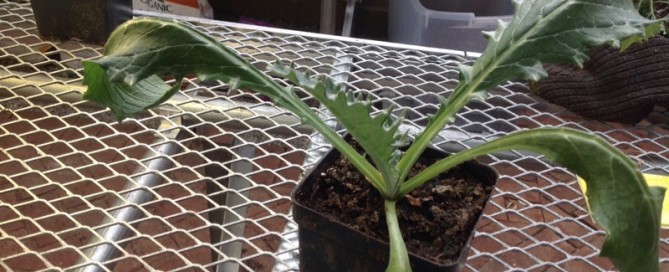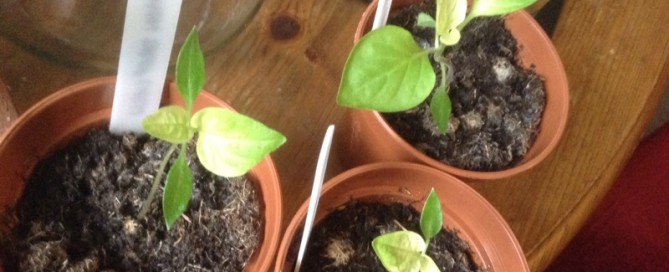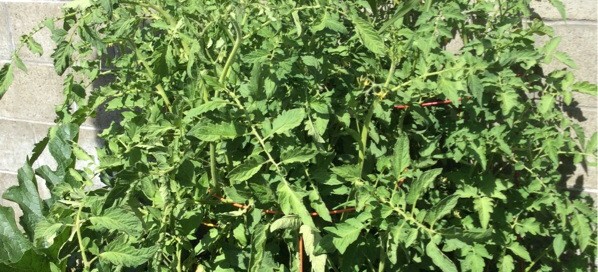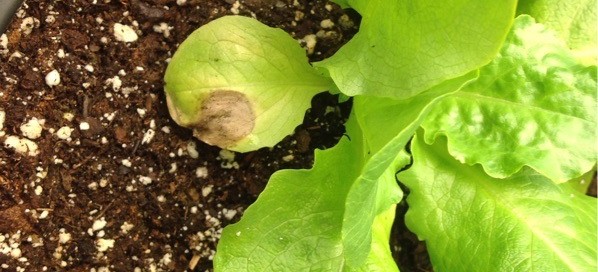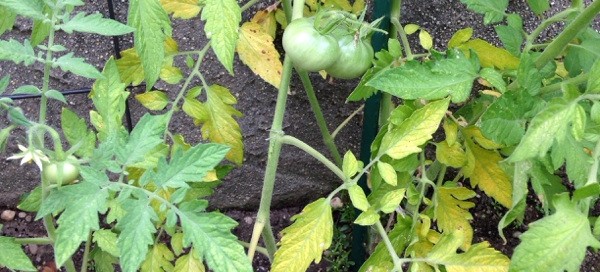Insect Damage On Tomato Leaf
This looks like insect damage from a bug with a piercing mouthpart although without seeing the entire plant in person it's impossible to be sure from a photo alone. The most common on indoor grown veggies are whitefly and aphids - look for tiny white insects flying, or white/gray insect "litter" on foliage (very small and dirty looking) or green, white or tan tiny insects on the new growth. The reason we suspect this is because when such insects suck the plant juices they pierce the cell with their mouthpart and this causes the cells to then grow in a bumpy or distorted manner. You can use insecticidal soap on this problem - not dish detergent! ask for insecticidal soap at your garden center and use it according to directions, spraying under the leaves. Insects like new growth because it's tender, so watch there. Additionally, putting a fan on the plants periodically during the day will stimulate them to grow stronger and be less attractive to insects.
